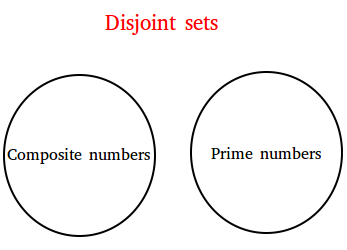What are Disjoint Sets? Definition and Real-Life Examples
Disjoint sets are sets that do not have any elements in common. In other words, their intersection is the empty set.

For example, the sets of composite numbers and prime numbers do not have any elements in common. Therefore they are disjoint sets.
Composite numbers = {4, 6, 8, 9, 10, 12, ...}
Prime numbers = {2, 3, 5, 7, 11, ...}
Real-Life Examples of Disjoint Sets
1. You conduct a survey and you divide the sample into gender (male and female). These two sets are disjoint because a person cannot belong to both the male and female sets.
2. An insurance company has written 50 individual life insurance policies and is interested in the number of claims which will occur in the next year.
A: there are at most 12 claims in the first half of the year.
A = {0, 1, 2, 3, 4,5,6,7,8,9,10,11,12}
B: The number of claims are between 30 and 45 (exclusive) in the second half of the year.
B = {31, 32, 33, 34, 35, 36, 37, 38, 39, 40, 41, 42, 43, 44}
A and B are disjoint sets because they have no amount of claims in common.